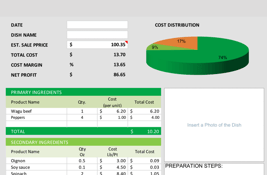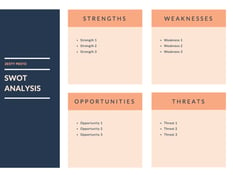Most new restaurants don’t make it across the 5-year mark. While there are many contributing factors, high costs play a huge role in the failure of restaurants.
Running a restaurant is a costly affair. Labor costs, especially, hold a big chunk of a restaurant’s total cost and can easily pile up and reduce profit margins significantly, which is why it’s important to keep track of your labor spend and understand how you can control and optimize it without affecting your restaurant’s performance.
Because labor is one of the most important aspects of running a business, learning how to control these costs can be difficult. How do you ensure you are not cutting down important employees or taking decisions that might affect your operations negatively?
In this article, we will help you better understand restaurant labor costs and how you can control and optimize them for your restaurant.
Let’s begin by taking an in-depth look into what restaurant labor cost includes.

What is restaurant labor cost?
Restaurant Labor Cost refers to all the money that a restaurant spends on its employees. This includes but is not limited to:
- Employee wages
- Employee health care
- Overtime
- Paid time off and sick days
- Bonuses
- Employee uniforms
- Hiring
- Training
- Other benefits like housing, travel, etc.
A restaurant’s labor cost is part of its main costing metric, Prime Cost, which is the sum of Cost of Goods Sold (CoGS) and Labor Cost. Restaurants often use prime cost to determine their restaurant’s efficiency. High labor cost leads to high prime cost, which indicates that the restaurant has low efficiency and is lacking in profits.
Average restaurant labor cost
Generally, a restaurant’s labor cost should not exceed 30% of its gross revenue. However, this number significantly varies from restaurant to restaurant based on different factors like the type of restaurant, size of the restaurant, etc.
There is no “one-size-fits-all” number for labor costs. A casual restaurant is likely to have lower labor costs compared to a full-service or fine-dining restaurant as there is more emphasis on service at such restaurants.
Here’s a quick look at the average labor cost percentage of different types of restaurants
- Casual restaurants: Quick and casual restaurants tend to have a lower labor cost percentage, usually around 25% of gross revenue, as there isn’t much emphasis on service, and the restaurants are mostly self-serve
- Table service: Restaurants with table service have higher labor costs as more staff is required for service. The labor cost at table service restaurants ranges between 30-40%.
- Fine-dining restaurants: Fine-dining restaurants have higher labor costs as more staff is required to provide the high level of service that customers are paying extra money for. Labor costs at a fine-dining restaurant can go up 40%, or even higher.
These averages can act as a benchmark for restaurant labor cost, however, they do not take into account various factors that may contribute to the costs of restaurants. Your restaurant’s ideal labor cost will depend on your operations and only you can understand what works best for your business.
How to calculate restaurant labor cost and labor cost percentage
A restaurant’s labor cost is calculated by adding all the labor expenses that took place within a given period of time.
Labor cost = Salaried employee wages + Hourly employee wages + Compensation + Overtime + Healthcare + Benefits + Hiring + Any other labor-related costs
The more important metric to better understand your restaurant’s spending is the labor cost percentage, which tells you the percentage of labor cost from your total revenue i.e. how much of your total revenue is being used for labor costs in a given period of time.
Labor cost percentage is calculated by dividing the total labor cost by total revenue. For instance, if you want to calculate the labor cost percentage for one month, you will first derive your restaurant’s total revenue for that month before tax and other deductions, then divide it by the total labor cost for that month, and multiply it by 100 to turn it into a percentage.
Labor cost percentage = Total Labor Cost / Total Revenue x 100
For example: Total labor cost for the month = $1,500.
Total revenue (before deductions) = $600
Labor Cost Percentage = 1500/6000 x 100 = 25%
This means that 25% of your gross revenue has been spent on labor costs.
Labor costs can also be calculated as a percentage of your restaurant’s total operation costs by following the same steps but replacing the total revenue with total operating costs.
Labor Cost Percentage = Total Labor Cost / Total Operating Costs x 100
The higher the labor cost, the lower your net profit, which is why it’s important to keep track of and control your restaurant’s labor cost to increase the overall profitability.
Learn more about important restaurant metrics like prime costs and operating costs here
How to reduce restaurant labor cost
Keep track of your labor cost
Given the fact that labor costs can come up to 40% of your revenue, its crucial to keep track to be able to keep them within control. Regularly tracking labor costs helps restaurants identify when the costs are getting too high. This allows restaurant owners to find the problem areas that are leading to the increase in labor cost and immediately take informed decisions to optimize and reduce them.
Break down your staff into categories
If your employees are all grouped under one category, it can be difficult to assess and understand why your labor costs are increasing. Breaking your workforce into categories based on different factors like the type of employee - bussers, servers, chefs or front of house and back of house, pay type - salaried or hourly wages, or working hours - full time or part-time, can provide a better picture of what’s causing the increase in labor costs. This way, you will be able to identify exactly which category needs to be optimized and cut down instead of unnecessarily optimizing other ones that might be working perfectly.
Have a highly trained workforce
It’s simple - the more trained your employees are, the better they are likely to perform. Well-trained employees do their job more effectively and efficiently, reducing the number of work hours and getting things done in lesser time. This in turn improves your restaurant’s operational efficiency and saves labor hours, which eventually leads to a lower labor cost.
Cross-training your employees is also a good way for increasing their productivity. Train every employee to perform multiple tasks so that they can help out wherever needed.
Create an employee training manual for your restaurant with our free template
Reduce employee turnover
High employee turnover is one of the biggest contributors to increase labor costs. Hiring is expensive, and the restaurant industry has one of the highest employee turnover rates, which makes it very difficult for restaurants to control labor costs. The cost of recruiting new employees and training them significantly affects a restaurant’s revenue.
Restaurants should focus on employee retention by providing them with fair wages, competitive benefits, and a good working environment.
The pandemic has also caused a global restaurant employee shortage, which has made employee retention more important than ever. Make sure that your staff is happy, provide them with motivation, and appreciate them for their hard work. A happy employee is less likely to leave and is also likely to perform better and have higher productivity than an unhappy, demotivated, and underappreciated employee.
Optimize your restaurant operations with technology
One of the best ways to reduce labor costs is to optimize your restaurant’s overall efficiency. The more efficient and productive your restaurant is, the lesser work labor work hours will be required from your employees.
Make use of advanced restaurant technologies like reservation and table management systems to save your employees’ hours and efforts that go into mundane and repetitive tasks like taking reservations, recording guest data, creating restaurant reports, etc. These simple tasks can easily be optimized and automated through systems like Eat App.
Instead, use your employees’ hours on more productive tasks like providing guests with a good customer experience.
If used correctly, the right technology can become your restaurant’s best and most efficient employee, saving your restaurant tons of hours and money in labor costs. Make sure you’re making use of the advanced systems now available for restaurants to improve your restaurant’s productivity.
Not sure where to begin? Here are some of the best and most useful technologies for restaurants














.webp?width=200&name=v2-15mknc-qpw1b%20(1).webp)
.webp?width=200&name=v2-15kqni-p0exl%20(1).webp)
-1.png?width=1812&height=1072&name=TripAdvisor%20%26%20More%20Bookings%20(1)-1.png)
-2.png?width=1812&height=1072&name=Google%20Bookings%20(1)-2.png)


-1.png?width=200&name=TripAdvisor%20%26%20More%20Bookings%20(1)-1.png)
-2.png?width=200&name=Google%20Bookings%20(1)-2.png)
-1.png?width=200&name=Instagram%20Bookings%20(1)-1.png)
-1-png.webp?width=200&name=Facebook%20Integration%20Rectangle%20(1)-1-png.webp)







.webp?width=200&name=download%20(1).webp)
%20(1)-2.webp?width=200&name=Eat%20(34)%20(1)-2.webp)
%20(1)-2.webp?width=200&name=Eat%20(18)%20(1)-2.webp)









%20(1)-1.webp?width=314&height=175&name=Eat%20(62)%20(1)-1.webp)


.webp?width=144&height=72&name=Eat%20App%20Logo%20(3).webp)